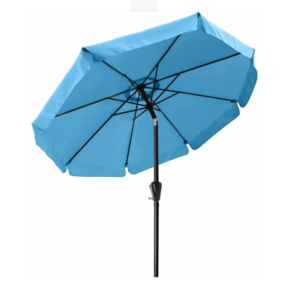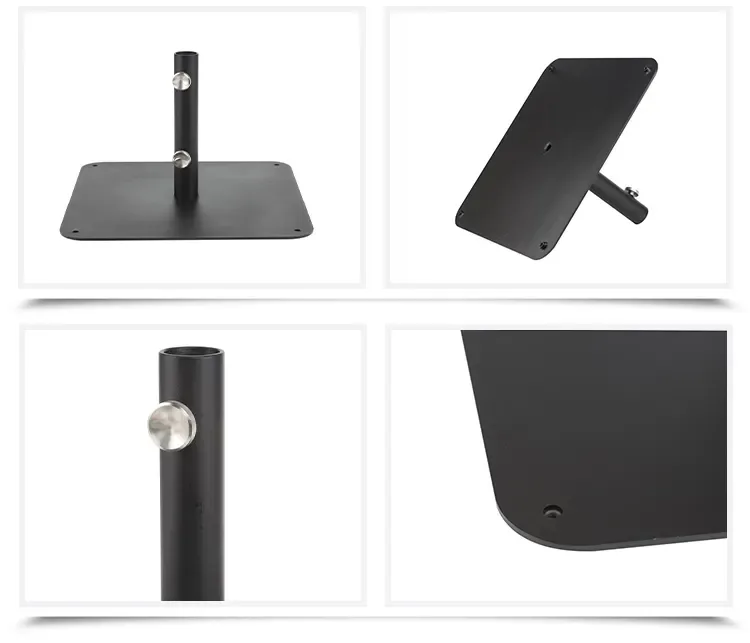
Cantilever umbrellas, also known as offset umbrellas, are a popular choice for outdoor areas due to their ability to provide ample shade without a central pole. However, these umbrellas require a special base to remain stable and secure. In this blog, we will explore why cantilever umbrellas need a special base, the types of bases available, and how to choose the right one.
A cantilever umbrella features an offset design where the pole is positioned to one side instead of the center. This allows for unobstructed space under the canopy, making it ideal for seating areas, patios, or outdoor dining setups.
Cantilever umbrellas are more prone to tipping due to their unique design. Since the umbrella’s weight is offset, a stable, heavier base is required to balance and support it. Here’s why a special base is necessary:
Choosing the right base for a cantilever umbrella is essential for its stability and longevity. Below are some of the most common types of cantilever umbrella bases:
| Base Type | Description |
|---|---|
| Weighted Base | Can be filled with sand or water, easy to install, and adjustable in weight. |
| Concrete Base | Heavy, sturdy, and ideal for permanent installations in windy areas. |
| Cross Base | A frame that requires additional weights, such as bricks or paving stones. |
| Mobile Base | Equipped with wheels for easy movement, but still requires added weight. |

Selecting the correct base involves considering several factors, such as the size of the umbrella, where it will be located, and local weather conditions.
Larger cantilever umbrellas require heavier and more stable bases. Always check the manufacturer’s recommendations to ensure the base matches the umbrella’s size.
If your umbrella will be in an area exposed to strong winds, choose a sturdier base like a concrete or weighted option. For locations with milder weather, water-filled bases can provide adequate stability.
If you plan to move your umbrella often, a mobile base with wheels may be the best choice. However, remember that the base will still need to be weighted down for safety.
For a permanent setup, concrete or cross bases with additional weights offer the highest stability. Water- or sand-filled bases may work better for temporary or seasonal setups.
Some cantilever umbrella bases can be filled with water or sand to increase their weight. Here’s a comparison of the pros and cons of using each material:
| Filling Material | Advantages | Disadvantages |
|---|---|---|
| Water | Easy to fill and drain, more convenient for portability. | Lighter than sand, less stable in windy conditions. |
| Sand | Provides more stability, especially in windy areas. | Harder to remove and transport when filled. |
Water-filled bases are easier to set up and remove, making them ideal for seasonal use. Sand-filled bases offer more weight and stability but can be more difficult to move.
Once you have chosen the right base, it’s essential to secure it properly. For example, a cross base might require additional weights or paving slabs to ensure stability. Always follow the manufacturer’s instructions on how to fill, assemble, and secure the base to prevent any accidents.
If you’re looking for a more permanent solution, some cantilever umbrellas can be bolted directly to a deck or patio using specialized hardware. This provides maximum stability but limits mobility. This option is best suited for those who plan to keep the umbrella in a fixed location.
Cantilever umbrellas do indeed require a special base due to their offset design and weight distribution. A stable base not only prevents tipping but also ensures the umbrella remains safe to use in various conditions. Whether you choose a water-filled base, a heavy concrete option, or a mobile base with wheels, the key is to balance functionality with safety.
By investing in the right base and securing it properly, you can enjoy the shade and comfort of your cantilever umbrella for years to come without worrying about stability issues.